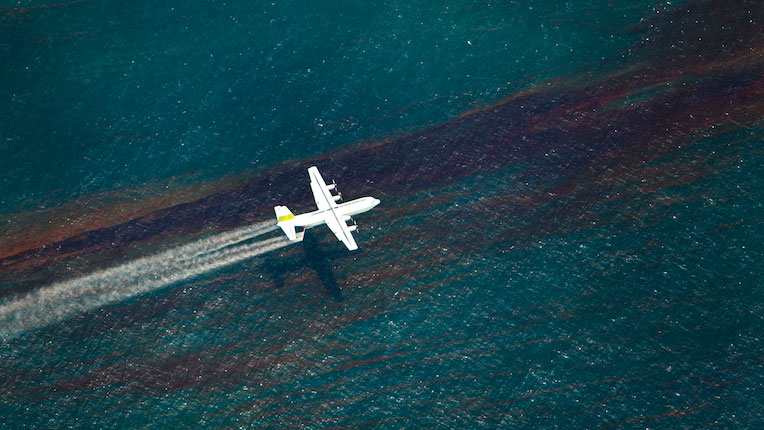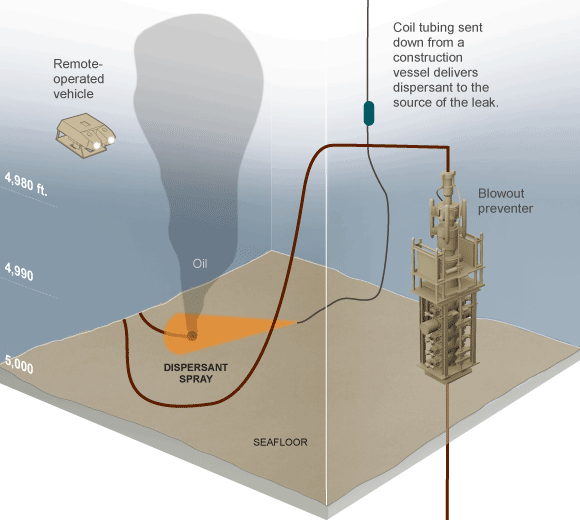Dispersants

Dispersants include chemicals that break down oil into smaller droplets, which are more likely to dissolve into the water. Faced with what one Coast Guard captain called a "tradeoff of bad choices" between spraying chemicals on the water or watching more oil reach the shore, responders would use dispersants for the next 12 weeks, employing novel methods and unprecedented volumes.
Dispersants have several potential benefits, including reducing the amount of oil that reaches vulnerable environments and wildlife. But dispersants also pose potential threats. Less oil on the surface means more in the water column, spread over a wider area, potentially increasing exposure for marine life. Chemically dispersed oil can be toxic in both the short and long term.
Dispersant use increased during the first weeks of the spill. From April 27 to May 3, responders applied 141,358 gallons to the surface. The following week, they applied 168,988 gallons. The Coast Guard and other responders had often deployed dispersants to respond to spills, but never in such volumes; during the Exxon Valdez spill, responders sprayed about 5,500 gallons, and that use was controversial.
APRIL 30 | Chemical Dispersants

As the volume of dispersants sprayed on the surface grew, BP raised the idea of applying dispersants directly at the well, rather than waiting for the oil to reach the surface a mile above. Responders had never before applied dispersants in the deep sea.
But responders were concerned about the absence of information on the effects of dispersants in the deepwater environment. No federal agency had studied subsea dispersant use and private studies had been extremely limited. Administrator Lisa Jackson ultimately gave EPA's approval for subsea dispersant use and would later call it the hardest decision she ever made. Observed toxicity levels never exceeded the guidelines in EPA's directive, and responders continued to apply dispersants at the source until BP capped the well.
